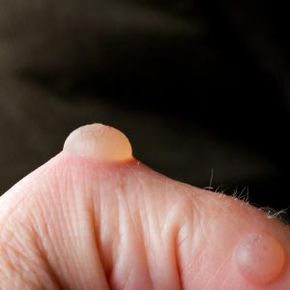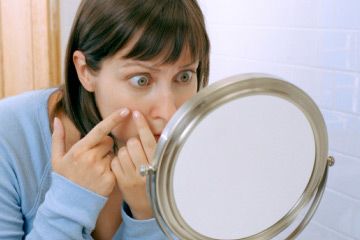You just couldn't resist that new pair of shoes, and now they've literally rubbed you the wrong way. Blisters can be painful, but the good news is they're relatively harmless and in most cases you can treat them yourself. If you do it right, you can alleviate your pain and avoid infection. If you do it wrong, you could make things a whole lot worse and end up with a serious infection. Of course, if you are a diabetic or have any sort of circulation problem, never lance a blister on your own. In these cases, call your doctor for proper treatment instructions.
Because blisters are so easily infected, be sure to wash your hands before you start this process. Start by sterilizing both your skin and your needle with rubbing alcohol. Never use a needle that is sterilized using a flame or boiling water. While doing this may sterilize the needle, you will most likely end up with a serious burn in addition to your blister. Once your needle is safely sterilized, insert the tip into the edge of the blister. To drain, gently push the fluid toward the newly made hole. This gentle touch helps ensure that the thin skin covering the blister remains intact, acting as a barrier to infection. Once draining is complete, pat the blister dry [source: WebMD].
Advertisement
Before you put on a bandage, be sure to slather on some antibiotic ointment. This not only helps prevent infection, but can also reduce pain by keeping your bandage from sticking to your blister. Use gauze to cover the blister. Be sure to wrap it loosely to avoid contact with your blister and to avoid cutting off blood supply to the affected area. As you heal, you want to keep this bandage as dry and clean as possible so change it once a day, or more if it gets dirty [source: WebMD].
For the first few days of the healing process you should avoid removing the loose skin above the blister unless it's severely damaged or if puss begins to form under it [source: WebMD]. However, several days after the lancing you can cut away this dead, dry skin using tweezers or scissors that are sterilized with rubbing alcohol. After removal, add antibiotic ointment and a new bandage [source: Mayo Clinic].
Your blister is now on the mend. To heal quickly, be sure to avoid doing, or wearing, whatever caused this blister in the first place. Sadly, this just might mean that those cute new shoes have to stay in the closet for a while. Keep reading to find out more information on lancing blisters.
Advertisement

